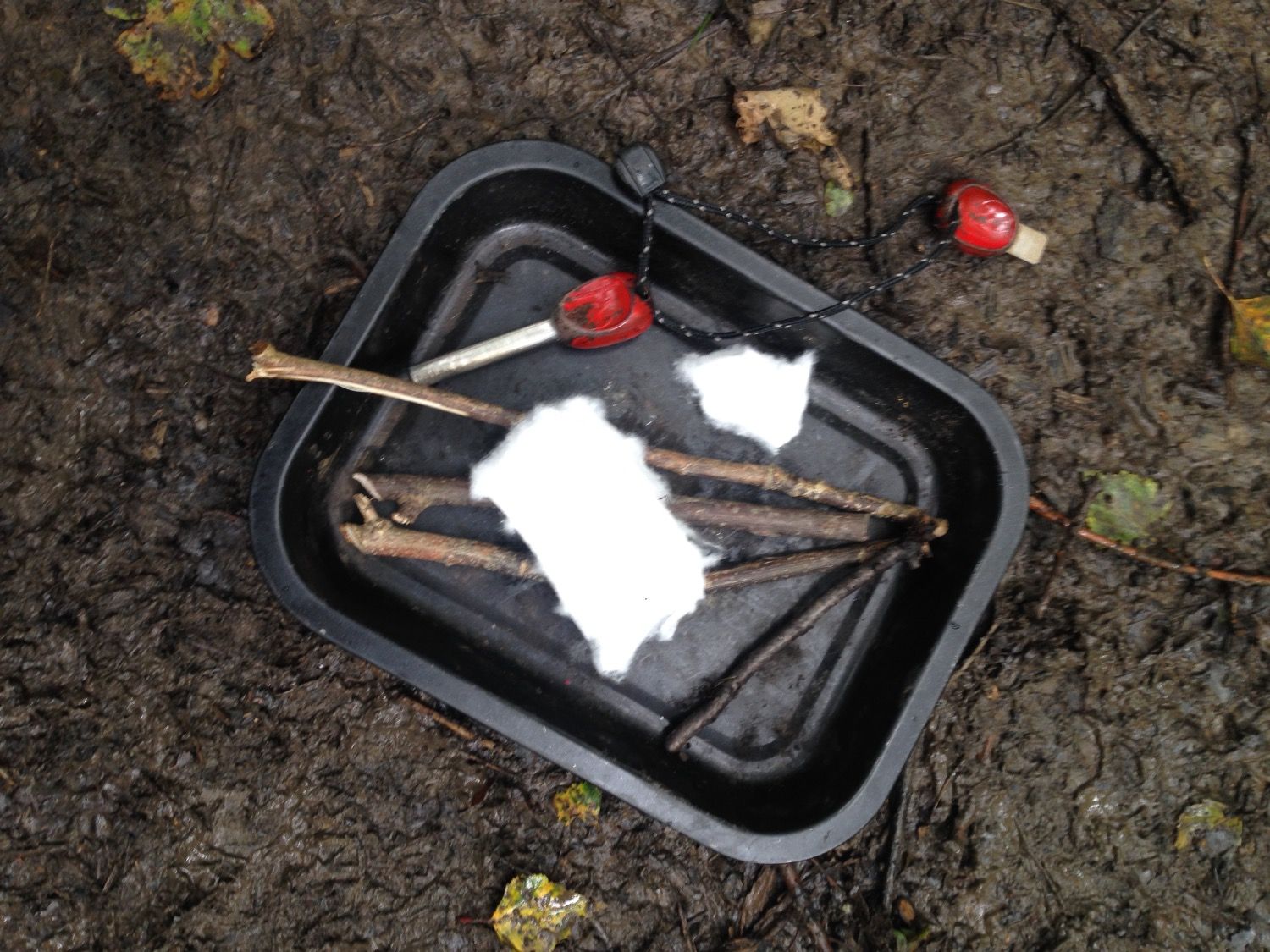
Blog
Stories from my personal journey learning about and delivering Nature-rooted programs across three different countries
Does firelighting promote self esteem?
Caylin (Forest Schooled)

Empty space, drag to resize
I've been doing a lot of firelighting using fire strikers with groups recently. Perhaps the cold weather makes this activity all the more enticing.
Personally, one of my favourite things about it is how excited people get when they manage to get a little fire going (even if it's just lighting a tiny piece of cotton wool). I'm not just talking about children either, adults can get just as, if not more excited, than the kids. At a recent parent-child session, the parents were right there on their knees with the children, persevering with the strikers until each one finally felt that feeling of victory associated with a seeing a piece of cotton wool going up in flames.
Personally, one of my favourite things about it is how excited people get when they manage to get a little fire going (even if it's just lighting a tiny piece of cotton wool). I'm not just talking about children either, adults can get just as, if not more excited, than the kids. At a recent parent-child session, the parents were right there on their knees with the children, persevering with the strikers until each one finally felt that feeling of victory associated with a seeing a piece of cotton wool going up in flames.
There's something about this that I do find a little bit intriguing - many of us interact with fire in some way every single day, but I don't know many people who give a yelp of excitement when they get their fireplace going or use a lighter... So what's the difference? Is it because lighting a fire using a fire striker is a new or infrequent experience? Does the specialness of it make it extra thrilling? I'm not so sure that explains the whole story! I know that, personally, although I have now lit many fires with just a fire striker, I still get a strong feeling of satisfaction every single time I do it (even if I don't jump for joy like I did the first time). I definitely don't feel that way when I see flames after turning the knob on my gas cooker to make dinner each night...
The act of firelighting from what feels like 'scratch' seems to give us something extra, providing a real sense of achievement that can promote self-esteem. So what is it about this activity that can bring us so much gratification?
An article on Kids Health (2016) states that, “Self-esteem is the result of experiences that help a child feel capable, effective, and accepted.” Feeling capable involves being able to do something for yourself. Feeling effective can come from seeing results for your efforts, particularly if the task was challenging. Feeling accepted is a bit more complicated, but it can result from feeling supported by others and a part of a group.
Based on this definition, does firelighting provide opportunities for supporting self esteem?
- Capable - Being able to light a fire is a skill that can we can extend further. Not only does lighting a fire mean we can keep ourself warm, we can also boil water and cook over it. This gives us the ability to serve our own basic needs, which can indeed make us feel capable.
- Effective - Lighting fire with a fire striker is a challenge. Even if you've done it before, the execution of it is still dependent on materials and weather, so it's never exactly the same each time. However, it's not overly challenging - most people can do it eventually, but it's just challenging enough that it makes us work for it. When you accomplish a challenge and see results for your efforts, you most certainly feel effective.
- Accepted - As an activity, it can also provide opportunities for feeling accepted. Fire lighting tends to become a social experience where if one person starts doing it, others will soon join. Quite often those who have mastered the skill offer guidance and support to those who haven't quite got it yet. I've witnessed a lot of mentoring and encouragement from peers during this activity. This provides opportunity for social bonding and cohesion along with feelings of acceptance.
I think this briefly helps to explain why firelighting can be viewed as more than just an 'exciting outdoor activity'. It's also a great opportunity to promote feelings of self-competence, give an element of challenge and a chance to connect with others, all of which encourage a healthy self-esteem. This is also why it shouldn't be discarded straight away as 'too risky' of an activity. Of course, there are significant risks involved in firelighting which require foresight, planning and potentially extra training for those leading the activity (particularly first aid). But the associated benefits help to justify why this risk can certainly be one worth taking.
References:
Kids Health (2016) Developing Your Child's Self-esteem, http://kidshealth.org/en/parents/self-esteem.html, 24/11/2016.
More Posts
WANT TO GET FOREST SCHOOLED TOO?
Subscribe to my email letters, something special from me to you so we can learn together. Each one is filled with heart-felt stories from the forest, resources you may find useful, and things that hopefully bring a smile too.
Thank you!
© by FOREST SCHOOLED
